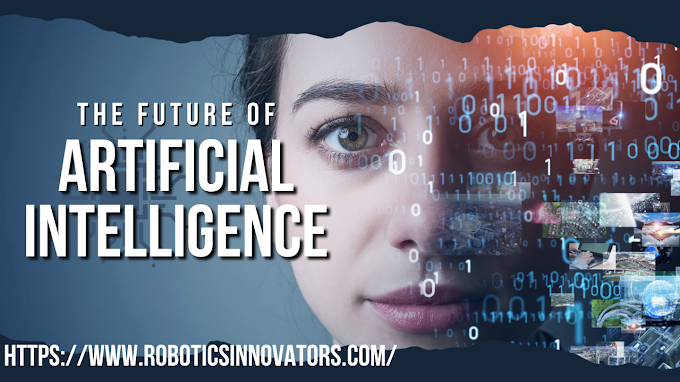The nexus of robots and artificial intelligence (AI) is swiftly emerging as a key factor in the development of new businesses, cutting-edge technology, and improved productivity and efficiency in already-existing industries. Its real-world applications are becoming more and more obvious as the area of AI in robotics develops.
AI is fundamentally changing industries and enhancing daily life in a variety of ways, including self-driving cars, customer service, healthcare, and industrial and service robots. The World Economic Forum (WEF) forecasts that by 2025, there will be 12 million more jobs created than lost as a result of AI and robots, despite worries that these technologies might eventually replace some human labor. This expansion offers a chance for retraining and upskilling
With the ability to automate repetitive operations in factories and provide flexibility and learning capabilities to laborious applications, the marriage of AI and robots has the potential to change job responsibilities across a range of sectors. The breadth and depth of AI's potential applications in robotics make this a fascinating area to research and comprehend. Learn more about robots and AI as well as how you may contribute to the future of this significant sector by reading on.
How Do Robots Work?
Robotics is a field of engineering and computer science that deals with the creation, maintenance, and use of robots that can carry out preprogrammed activities on their own. Fundamentally, robotics is the use of technology to automate processes while improving their efficiency and safety.In the past, robots have been utilized for monotonous jobs like building cars or for duties that are too risky or impossible for people to complete, such carrying heavy equipment. Robotics solutions can increase productivity and safety by automating these chores, freeing up human workers to concentrate on more difficult and imaginative projects.
It's also important to remember that robots are not constrained in the same ways that people are. For instance, a person performing the same activity again may get weary, bored, or disinterested, whereas the robot will carry out the same task with a constant degree of efficiency and accuracy. Solutions utilizing robotics are already having a significant influence in a number of industries, from making precise agricultural harvests to
Is there a difference between AI and robotics?
Although the terms artificial intelligence and robotics are frequently used synonymously, they really belong to separate but related domains. While both robots and AI have the potential to have a big influence on many different businesses and facets of life, each technology has a distinct function and works in a certain way.
Simply said, robotics is related to the human body whereas AI neural network models are similar to biological brain networks. The creation of systems that are capable of learning, solving problems, and making decisions—tasks that traditionally require human intelligence—is referred to as artificial intelligence (AI). Since these systems are designed to learn and adapt on their own, they may operate independently and without continual guidance.
On the other hand, robotics refers to the creation of robots that are capable of carrying out particular physical activities. These robots may be trained to do easy, repetitive tasks like sorting objects or putting together tiny pieces. Although artificial intelligence (AI) may be included into robotics to increase the robot's skills and decision-making, it is not necessarily required. Certain robotics applications just call for predictable actions from robots, not advanced cognitive capacities.
Despite the fact that AI and robots are not the same, they do compliment one another and may work together to produce a variety of advantages and breakthroughs in a variety of applications.
The Role of AI in Robotics
Since AI has advanced significantly over the past several years, integrating it with robots has emerged as a logical next step. Despite not being widely used yet, AI in robotics is quickly gaining ground as AI systems progress. Robotics and AI working together has a lot of promise to raise production and efficiency, improve safety, and provide employees in a number of professions more freedom.
Machine learning is one of the main applications of AI in robotics. Through observation and imitation of human behavior, this approach enables robots to learn and carry out specified activities. Robots equipped with AI have computer vision that allows them to navigate, identify, and decide how to respond appropriately. This enables them to transcend
Edge computing is another method that AI is used to robotics. Robot-based sensors collect enormous volumes of data in real time, and AI applications in robotics need that this data be interpreted. For this reason, local analysis of the data takes place rather than sending it to the cloud to be processed. By giving machines real-time awareness, this method enables robots to act on choices far more quickly than human skills allow.
AI also assists robots in learning to carry out certain jobs by using a variety of sensors, which may include:
optical time-of-flight sensors
sensors for humidity and temperature
ultrasound detectors
sensors for vibration
sensors for millimeter waves
With the aid of these sensors, robots may learn and adapt, becoming smarter and better able to act and react in a variety of situations.
Robotics applications of AI
AI has shown to be a beneficial tool in a range of robotics applications. AI has created a name for itself and is continuing to transform how we see and work with robots in a variety of industries, from manufacturing to customer service. Let's examine some of the main areas where AI is now employed in conjunction with robots.Customer service: Applications for AI-powered chatbots in customer service are becoming more widespread. Simple, repeated inquiries can be handled by these automated service agents without the presence of a human. These systems learn more as a result of increased human interaction. Additionally, as AI systems advance, we may anticipate seeing an increase in the usage of robots in customer support.
AI has shown to be a crucial tool for robotic assembly applications, particularly in challenging industrial sectors like aerospace. AI can let a robot automatically learn the optimum courses for specific procedures while it is in use, enabling real-time course correction with the use of cutting-edge visual systems.
AI is applied in the packaging sector to increase productivity, precision, and cost-effectiveness. AI assists in making installation and moving robotic equipment simpler for everyone by continually improving and saving specific actions made by robotic systems.
Imaging: Accurate imaging is essential in many sectors, including assembly and logistics. Robots can develop improved visual acuity and image recognition skills with the help of AI, enabling increased accuracy in even the minute details.
Robotics may use machine learning as a strong tool. Robots may discover more about their environments, navigate past barriers, and find solutions to issues in order to carry out jobs more quickly. Machine learning is enabling robots to become smarter and more adaptive in a variety of workplace settings, from production robots in factories to domestic robots like vacuum cleaners.
These are only a handful of the numerous uses for AI that robots has today. We'll probably soon see even more creative uses as these technologies continue to develop and become more sophisticated.
A robotics engineer is what?
A robotics engineer is essential to the design, upkeep, and operation of robots as they continue to alter several sectors. A robotics engineer is an expert who constructs, installs, and maintains the machinery used in industries including manufacturing, security, aerospace, and healthcare.The following are some of a robotics engineer's regular duties:
installing, maintaining, and testing machinery and parts
implementing preventative maintenance
integrating pertinent technical knowledge into their comprehension of how systems work
locating fresh data sources
Developing cooperative partnerships
making sure software solutions satisfy client requirements
creating and implementing an AI governance framework to oversee the continuous use of AI strategies
Processes are being evaluated and reimagined constantly to include conversational AI
keeping informed about safety guidelines and rules to ensure that
Robotics and AI in the Future
Robotics' use of AI has a bright and promising future. Artificial general intelligence, or AGI, the subsequent stage of AI, has the capacity to develop to levels of full human comprehension. Integrating an AI computational system with a robot is crucial in this situation. The robot must be mobile, have senses (such as touch, vision, and hearing), and be able to interact with real-world things so that it may feel the immediate effects of every action it performs. The system can learn and understand thanks to this feedback loop, which advances its development toward full AGI.
The present focus on AI in robotics is moving away from the issue of what jobs robots can carry out for people and toward the issue of what kind of input a robot can supply the AI's "mind." It will be feasible for AI to become closer to a deeper knowledge, much like a human youngster, by allowing it to explore and play with actual items. We may anticipate substantial developments across a variety of industries, from manufacturing and healthcare to security and space exploration, as a result of the combination of AI and robots.
Robotics' use of AI has a promising future and has the ability to significantly improve our understanding of and interactions with the outside environment. Combining the physical capabilities of robots with the computational capacity of AI, we
are opening up new avenues for research and invention, and the possibility of real AGI is now within grasp.
Are you thinking about becoming a robotics engineer? Our degree in Applied Artificial Intelligence from the Master of Science program could only be the start of a fruitful path. For more information, see our insightful eBook, Eight Questions to Ask Before Choosing an Applied Artificial Intelligence Master's Degree.









.jpg)



